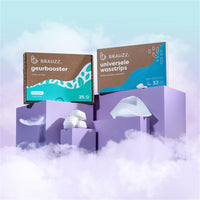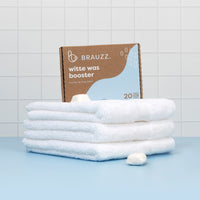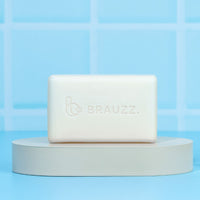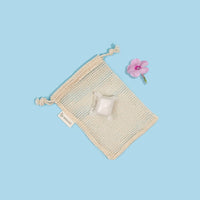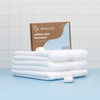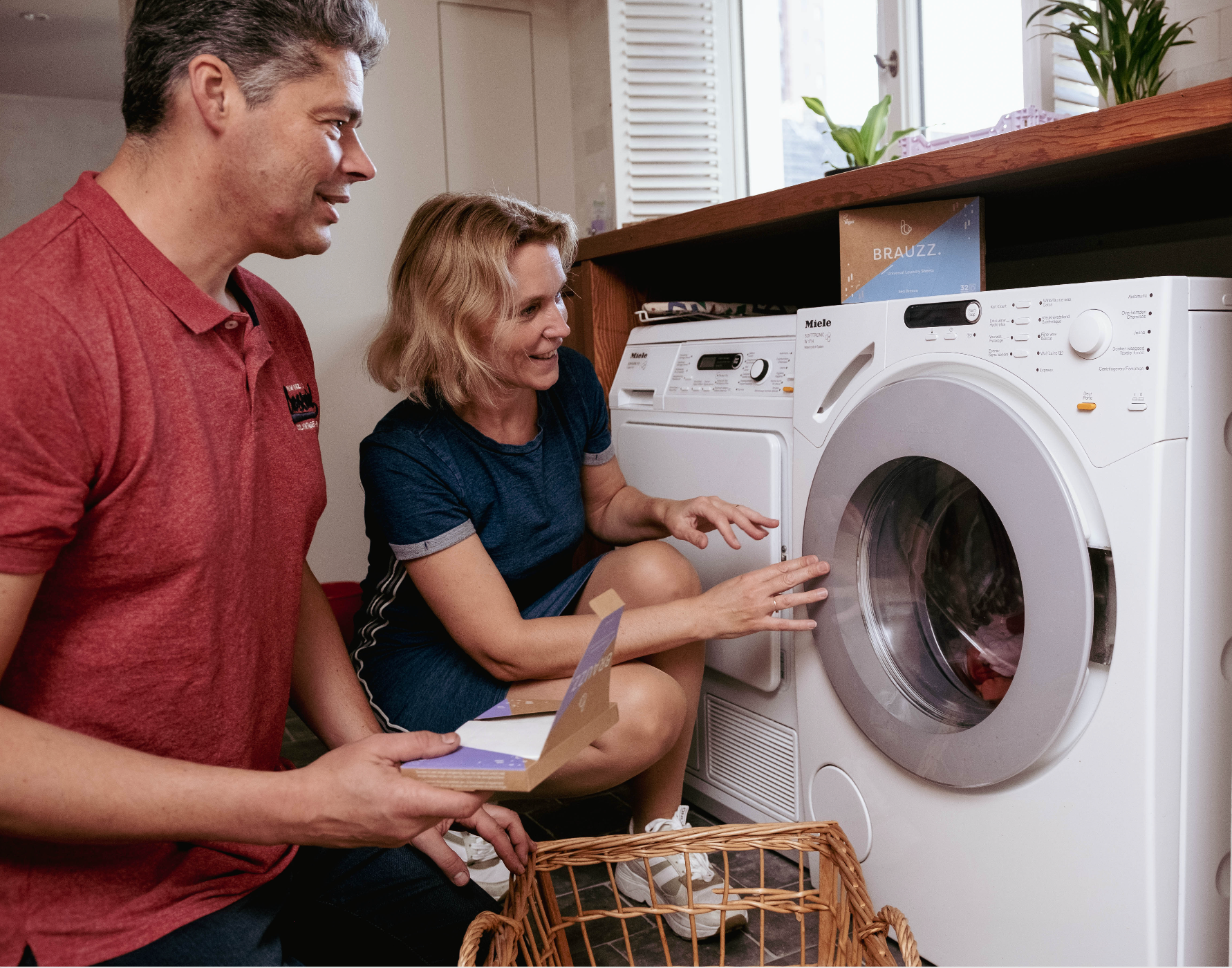How much energy and water does your washing machine consume? Tips and advice on how to wash ecologically!
Laundry is a vital task in our household, but did you know that your washing machine can have quite an impact on your energy consumption and on the environment?
Fortunately, there are plenty of steps you can take to make your laundry routine more sustainable and save costs.
Washing machines and ecology: an important combination
A washing machine can be quite an energy guzzler, so choosing an energy-efficient machine is crucial.
The energy label: your guide to an ecological washing machine
The energy label is your best friend when buying a new washing machine. This label shows at a glance the energy consumption of the machine, ranked from A+++ (very economical) to G (least economical). So always choose a machine with an A+++ or A++ label.
How much energy does a washing machine consume?
The energy consumption of a washing machine depends on several factors, such as the selected wash cycle, the amount of laundry, water hardness and the condition of the machine.
Average consumption of a washing machine per wash:
-
- 0.55 kWh on the eco program
-
- 0.69 kWh on a program for synthetic clothing
-
- 1.5 to 2.0 kWh on a 60°C cotton program
This corresponds to an annual consumption of 110 to 400 kWh for an average household with 200 washes per year.
Average energy consumption per energy label of your washing machine for an average family:
| Energy Label | Annual kWh consumption (at 200 washes). | Average kWh per wash |
|---|---|---|
| A | Less than 100 kWh | 0.50 kWh |
| B | 100 - 119 kWh | 0.59 - 0.60 kWh |
| C | 120 - 149 kWh | 0.60 - 0.75 kWh |
| D | 150 - 179 kWh | 0.75 - 0.90 kWh |
| E | 180 - 209 kWh | 0.90 - 1.05 kWh |
| F | 210 - 239 kWh | 1.05 - 1.20 kWh |
| G | More than 240 kWh | More than 1.20 kWh |
How much water does a washing machine consume?
A washing machine's water consumption varies by model and wash cycle.
Average consumption of a washing machine per wash:
-
- 50 liters of water on an eco-program
-
- 60 liters of water on a program for synthetic clothing
-
- 70 to 80 liters of water on a 60°C cotton program
This corresponds to an annual consumption of 5,000 to 8,000 liters of water for an average household with 200 washings per year.
Average water consumption per energy label of your washing machine for an average family:
| Energy Label | Average water consumption per eco-wash | Annual water consumption (at 200 eco-washings) |
|---|---|---|
| A | 45 - 50 liters | 9,000 - 10,000 liters |
| B | 51 - 55 liters | 10,200 - 11,000 liters |
| C | 56 - 60 liters | 11,200 - 12,000 liters |
| D | 61 - 65 liters | 12,200 - 13,000 liters |
| E | 66 - 70 liters | 13,200 - 14,000 liters |
| F | 71 - 75 liters | 14,200 - 15,000 liters |
| G | More than 75 liters | More than 15,000 liters |
In addition to the energy label, there are other factors that affect the energy and water consumption of your washing machine, such as:
-
- drum size: larger drums typically consume more energy and more water
-
- Water hardness: in areas with hard water, more detergent is needed, which can lead to higher energy consumption and higher water consumption
-
- functions: some washing machines have additional functions, such as steaming, pre-washing or extra rinsing, which use more energy and more water
Tips to wash more sustainably with your washing machine
With a few simple adjustments to your laundry routine, you can significantly reduce your washing machine's carbon footprint.
1.Select the appropriate temperature:
Washing at lower temperatures saves a lot of energy. Most washing programs nowadays already clean your clothes perfectly at 30°C or 40°C.
2.Fill the machine:
Washing with a full drum is more efficient than with a half-full one. So feel free to wait until you have enough laundry to run a full load.
extra tip: When the drum is full, place the laundry strip in the load compartment.
3.Use eco-programs:
Most modern washing machines have special eco programs aimed at reducing energy and water consumption.
4.Let your laundry dry on the laundry rack:
Dryers are real energy guzzlers. Use a laundry rack to dry your laundry.
5.Maintain your machine:
Proper maintenance extends the life of your washing machine as well as ensures more efficient operation. Clean the filters and drum regularly and use the right detergent.
Discover the cleaning tip to clean your machine!
6.Avoid overdosing on detergent:
Proper dosage when washing is better for the environment AND saves you money. Laundry sheets are a convenient alternative to traditional detergent. They are compact, universal, biodegradable and contain just the right amount of detergent for one wash. The advantages of Laundry sheets are numerous.
The best washing machine brands for ecological washing!
You can find the most energy-efficient washing machines at Këfel. They offer a wide range of ecological washing machines from top brands, so you can be sure of an appliance that's good for your wallet as well as the environment.
The best washing machine brands for ecological washing are:
-
- the AEG ProSense washing machine features advanced technologies that save water and energy without compromising washing performance
-
- the Bosch washing machine is equipped with water and energy-saving features that automatically adjust to the size of the load
-
- the Siemens washing machine combines innovative water-saving technology with an eco-speed program so you save time and energy without compromising on cleaning results
Buying a washing machine? Here's what to look out for, too!
In addition to the energy label, here are other tips to consider when buying a washing machine:
-
- fill weight: how much laundry should the machine be able to wash at a time
-
- noise: how quiet is the machine during washing and spinning
-
- comfort features: does the machine have additional features you care about, such as a delayed start or a steam program
-
- Adjustable speed: so you can choose the optimal program for each type of laundry
Frequently asked questions about washing machines and eco-friendliness
"Can you buy a washing machine with eco vouchers?"
Yes, in Belgium you can buy an energy-efficient washing machine with ecocheques. You can find the conditions for this on the website of the Federal Public Service.
"How much detergent should I use in a wash?"
Too much detergent can lead to unnecessary costs, pollution of the environment and residue on your clothes. Too little detergent can keep your laundry from getting clean. With BRAUZZ Laundry sheets, you don't have to worry about dosage! Each strip is pre-dosed with the perfect amount of powerful, ecological detergent. Just put one laundry strip in the washing machine along with your laundry. No fuss, no waste, no residue. Discover this new way of washing.
"Can you use a dryer and washing machine at the same time?"
Yes, it can be done but we advise against it. Why it's better to run both devices separately:
-
- Better for your wallet: both devices are energy guzzlers. Turning them on at the same time can lead to spikes in your power consumption. Not great for your wallet, especially with energy prices these days!
-
- Bye bye overloaded power grid: your power grid can get overloaded, especially at peak times. Help keep the grid healthy by planning your laundry smartly.
-
- Optimal washing and drying performance: having both appliances fighting for power at the same time can lead to reduced performance. Still want that crisp sea breeze or lavender scent on your clothes? Then give your washer and dryer all the love (read: power) they deserve.
-
- Less CO2 emissions: More power means more co2 emissions. Not nice for Mother Earth. Give her a hand by dividing your laundry smartly.
"Can a dryer be placed on top of a washing machine?"
Yes, in most cases a dryer can be placed on top of a washing machine. In fact, this is a space-saving solution often chosen in small homes or apartments.
But note:
-
- check the manual of both devices because some manufacturers advise against stacking their devices.
-
- use a stacking kit. This is a spacer that improves stability and safety. This kit is available from the manufacturer of your device or from online retailers.






